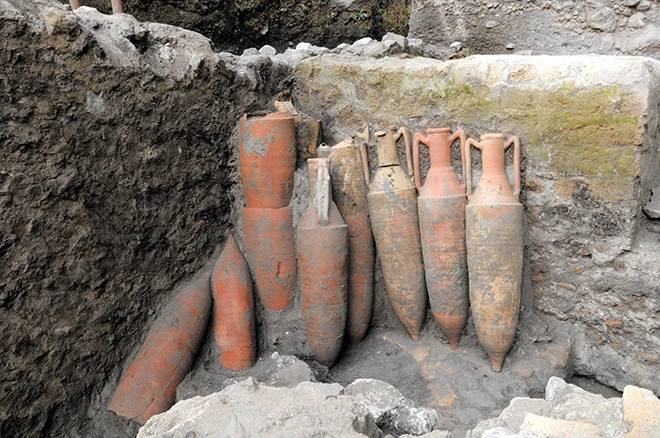Researchers from the University of Tokyo have unveiled a remarkable discovery at a site nestled within ancient Roman ruins buried beneath layers of volcanic ash in southern Italy. This archaeological revelation, spearheaded by Mariko Muramatsu, a distinguished professor of Italian studies, sheds new light on a nearly 2,000-year-old building that could potentially be linked to the legendary first Roman Emperor, Augustus (63 B.C.—A.D. 14).
The excavations took place in the Somma Vesuviana region, situated on the northern fringes of Mount Vesuvius in Italy’s Campania Region, commencing back in 2002 under the meticulous guidance of Muramatsu’s team.
Historical accounts suggest that Augustus met his demise at a villa located northeast of Mount Vesuvius, and subsequently, a commemorative structure was erected there to honor his achievements. However, the exact whereabouts of this villa had long remained a tantalizing mystery.
The recent revelations by the University of Tokyo team have uncovered a section of a structure believed to have served as a warehouse. Notably, a wall within the building displayed an array of amphora ceramic containers meticulously arranged in a row. Moreover, remnants of what appeared to be a furnace, likely utilized for heating baths, were also unearthed. The building exhibited signs of partial collapse, with ancient roof tiles strewn across the premises.

Carbon dating conducted on samples extracted from the furnace indicated a predominant presence of materials dating back to the first century. Remarkably, there were no findings indicative of subsequent periods, hinting that the kiln ceased operations post the specified era.
One compelling argument put forth by the researchers is the presence of a private bath within the structure, a feature commonly associated with residences belonging to esteemed figures. The timing of the bath’s disuse coincides with the period surrounding Augustus’s demise, further fueling speculations of a potential connection between the building and the revered emperor. Additionally, the subsequent construction of a substantial temple on the same site bolsters the notion of its historical significance.
Chemical analysis of the volcanic pumice enveloping the ruins affirmed its origin from the pyroclastic flow emanating from Mount Vesuvius’ catastrophic eruption in 79. This cataclysmic event famously obliterated Pompeii, situated on the mountain’s southern slopes.

Masanori Aoyagi, professor emeritus of Western classical archaeology at the University of Tokyo and the founding leader of the research team, expressed profound enthusiasm over this milestone discovery. He remarked, “This breakthrough, achieved after two decades of meticulous excavation, marks a pivotal development in our understanding of the impact on the northern region of Vesuvius and provides invaluable insights into the events surrounding the fateful eruption of 79.”
